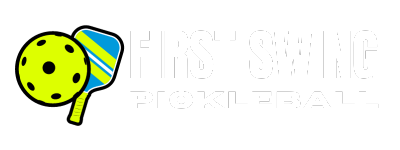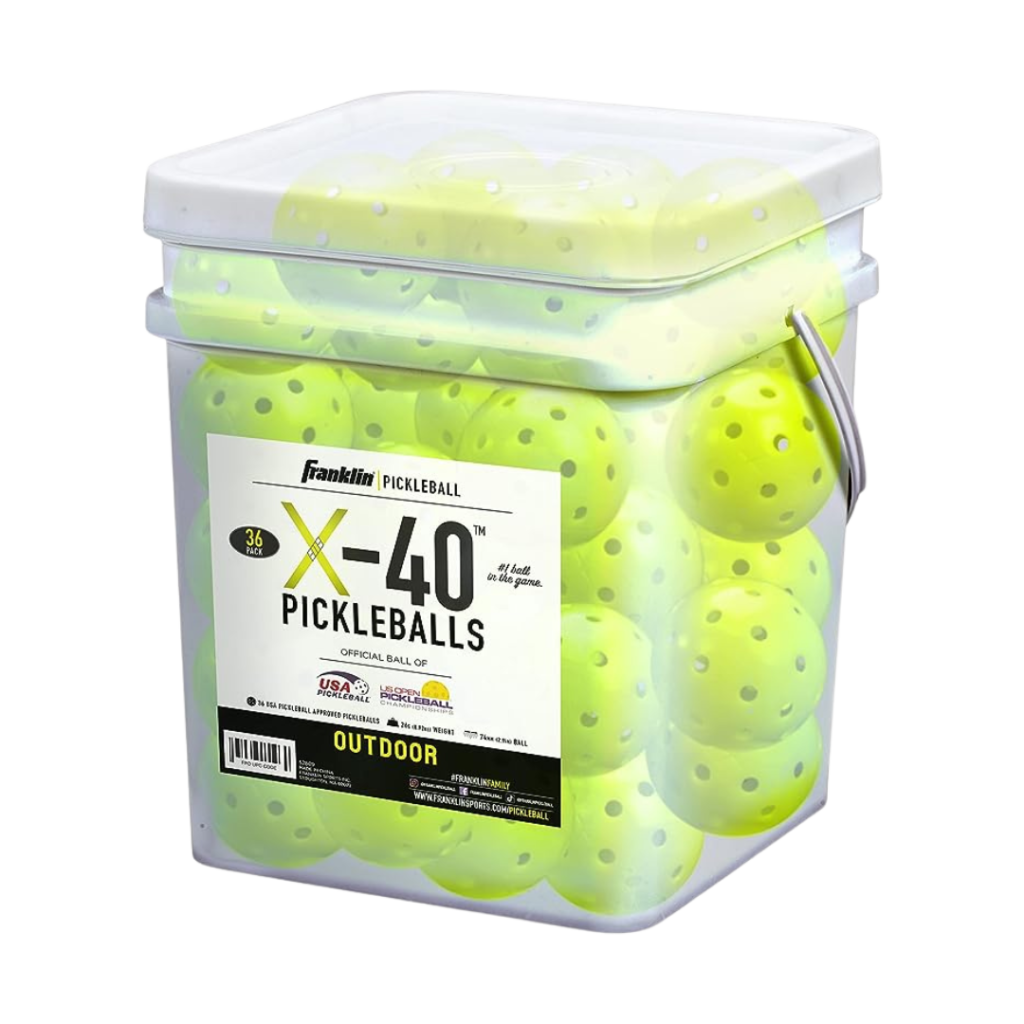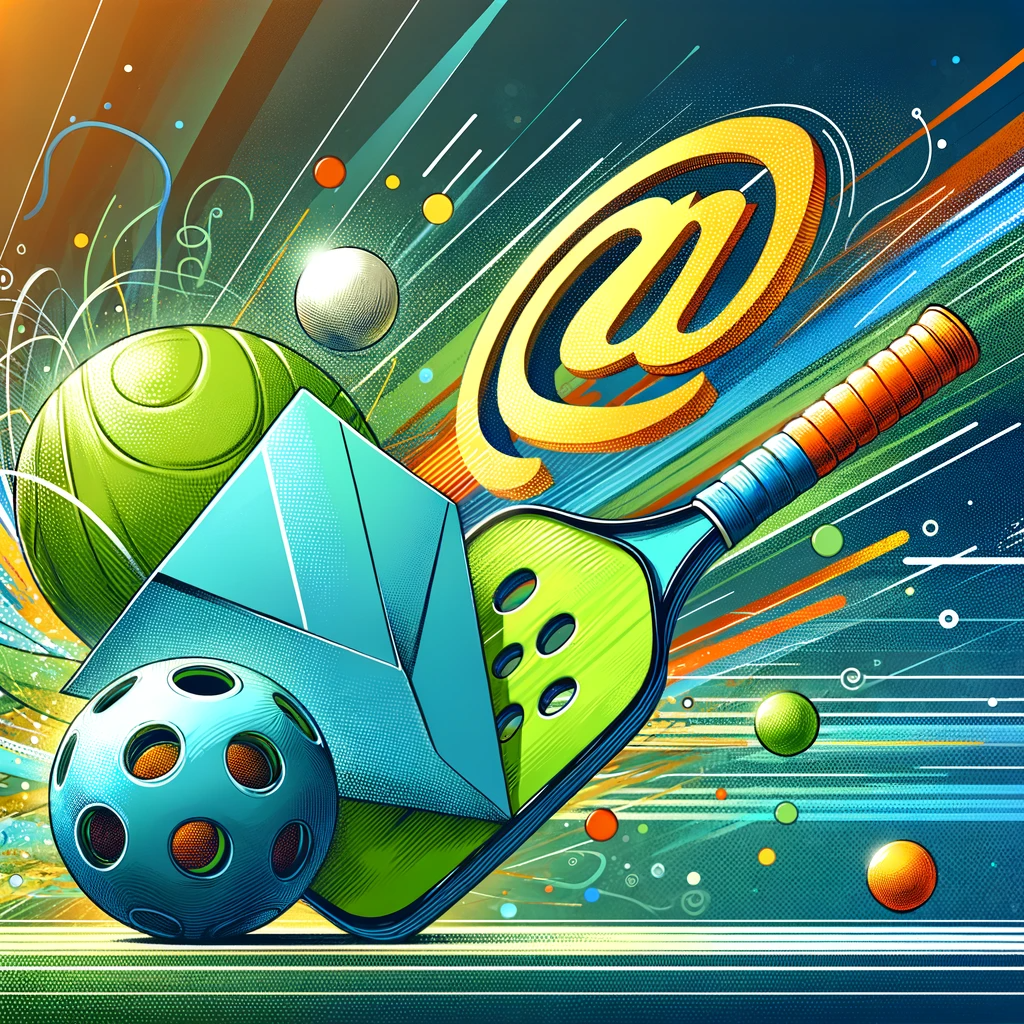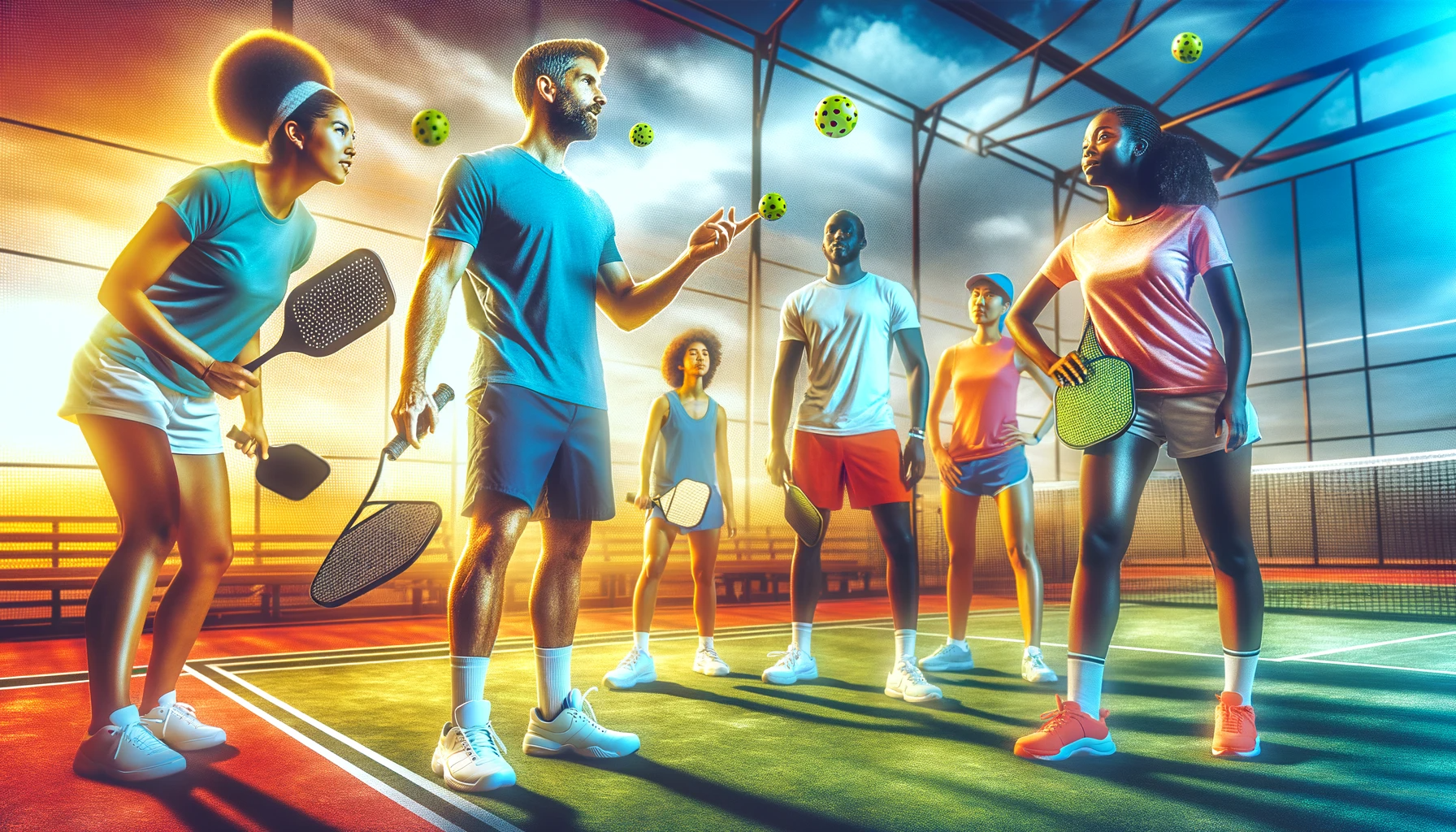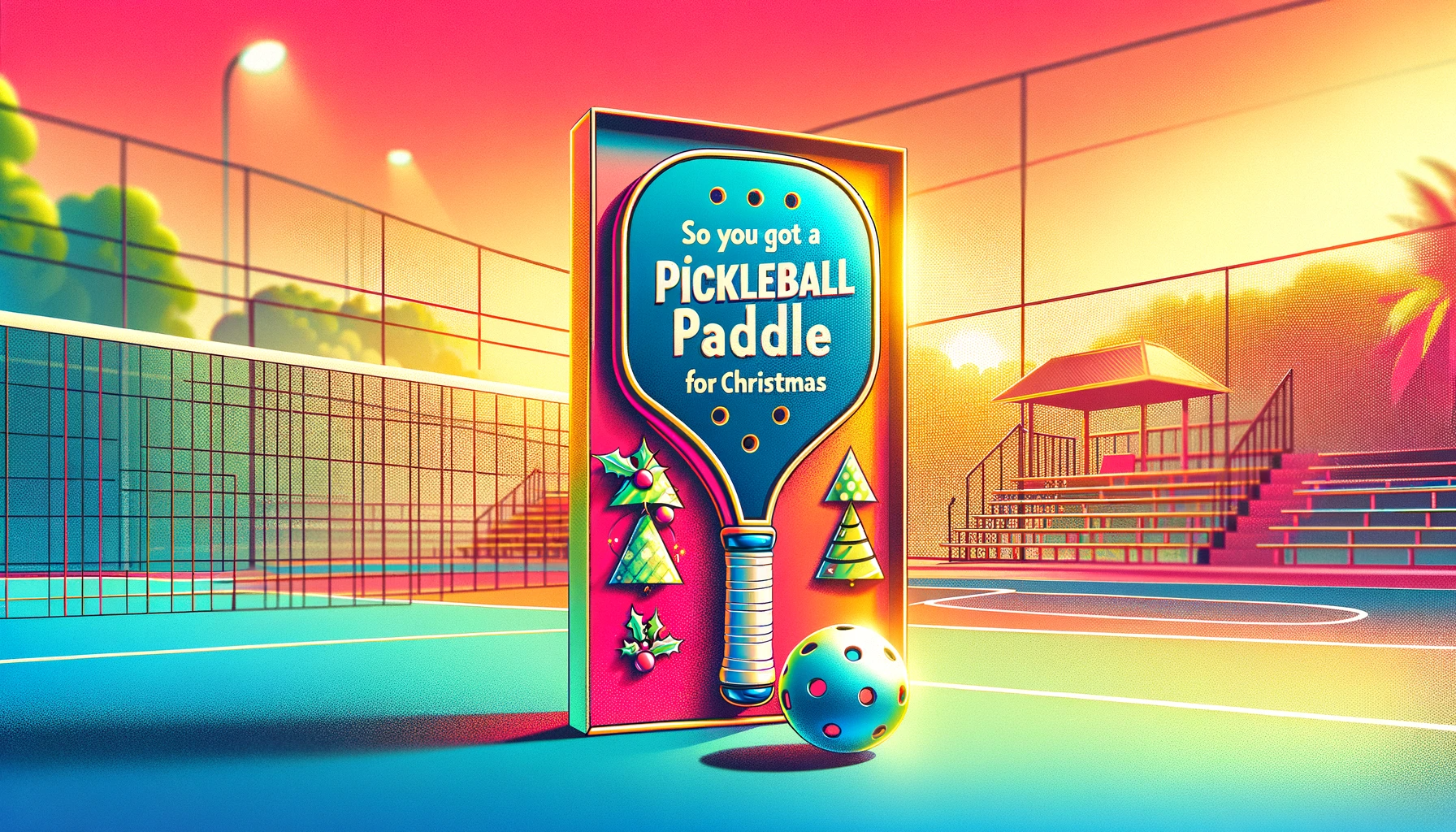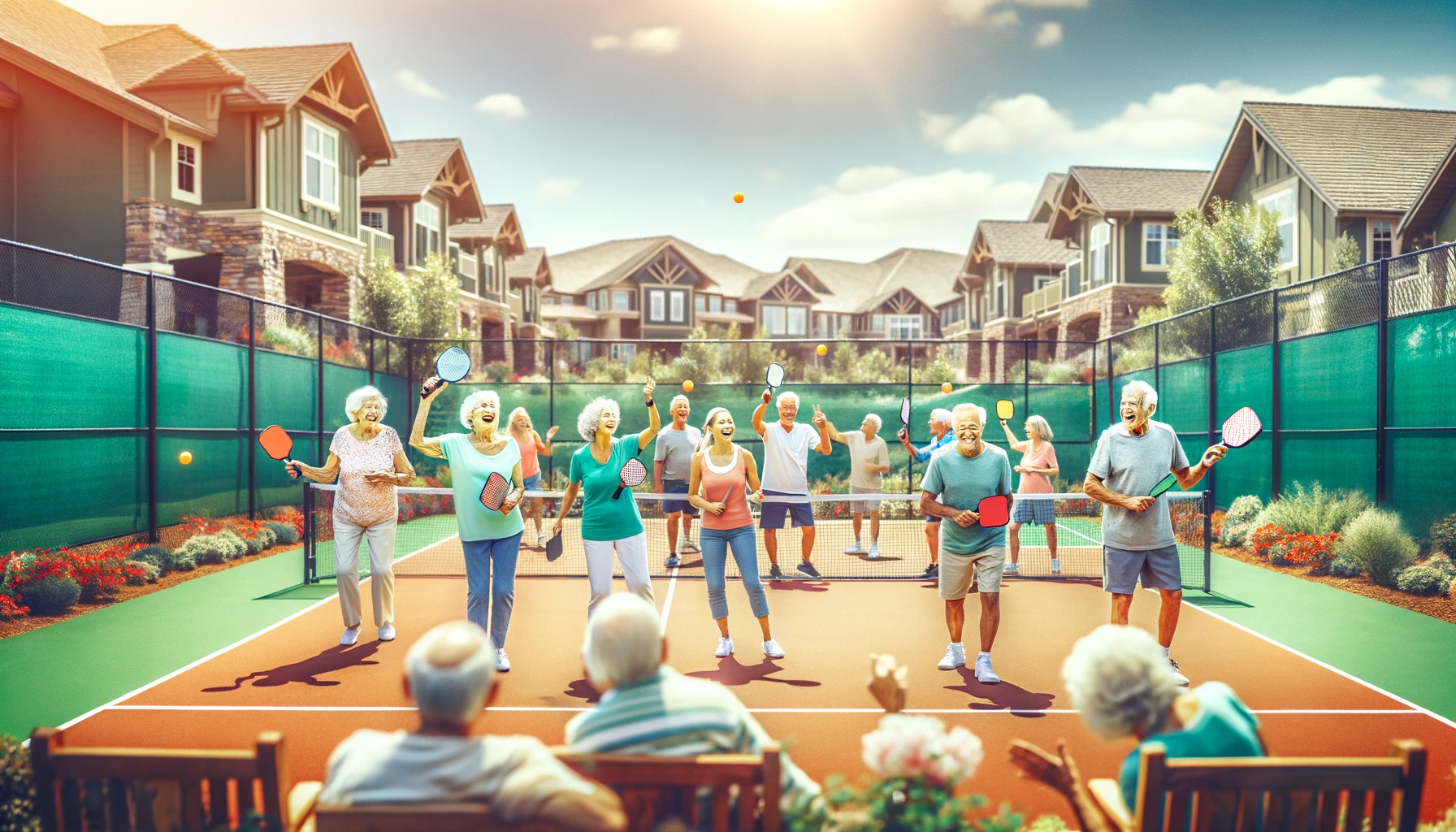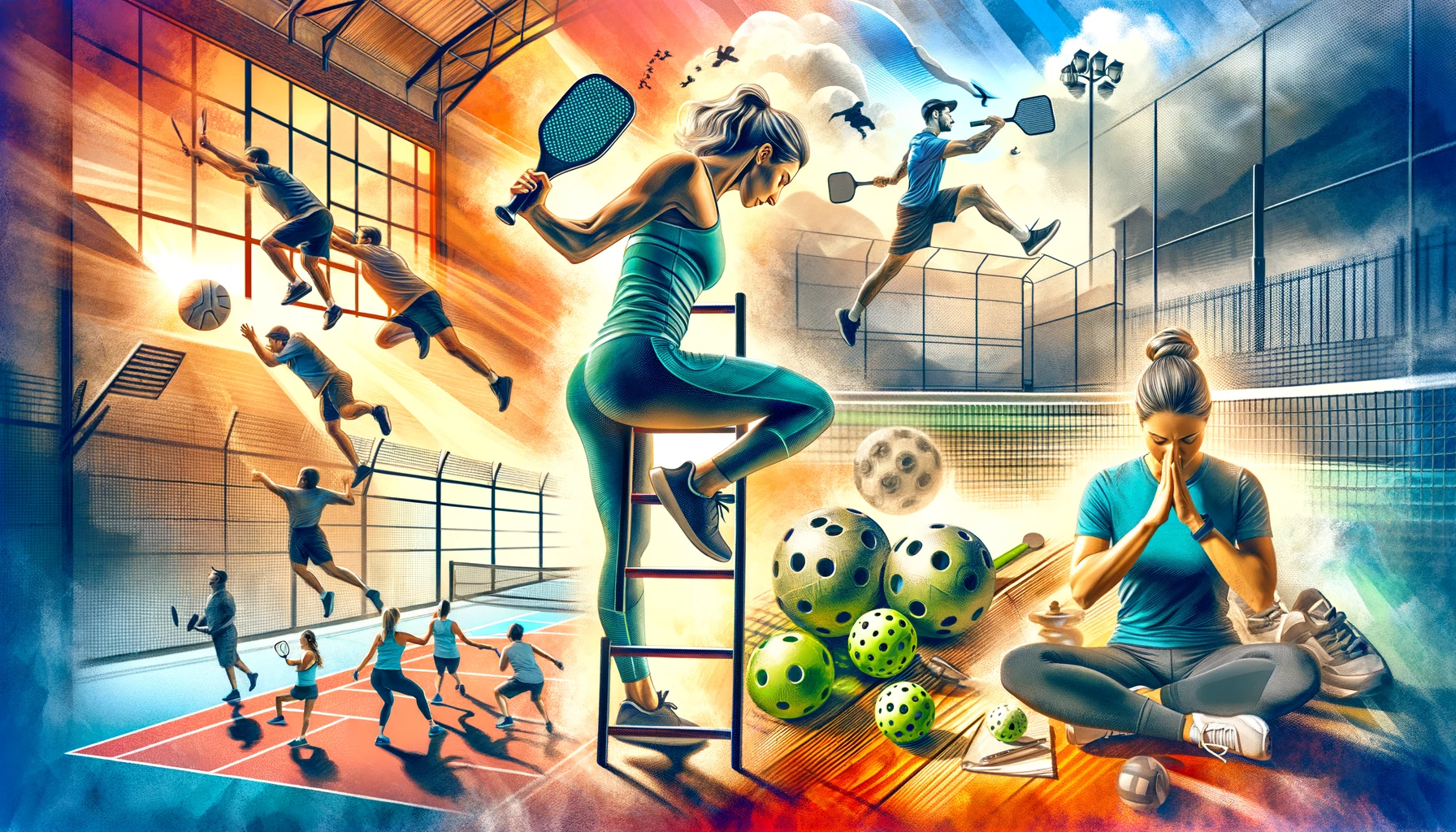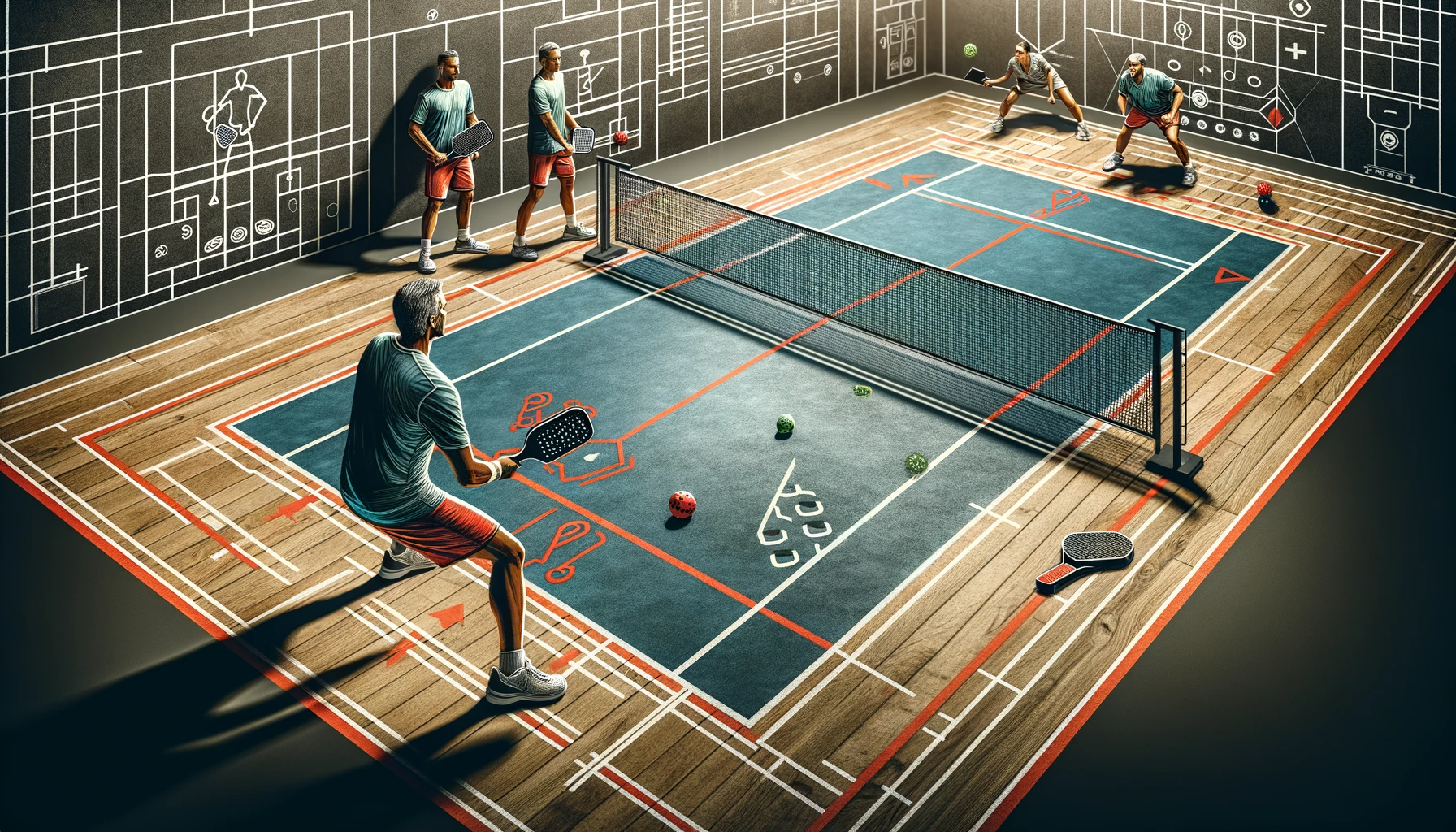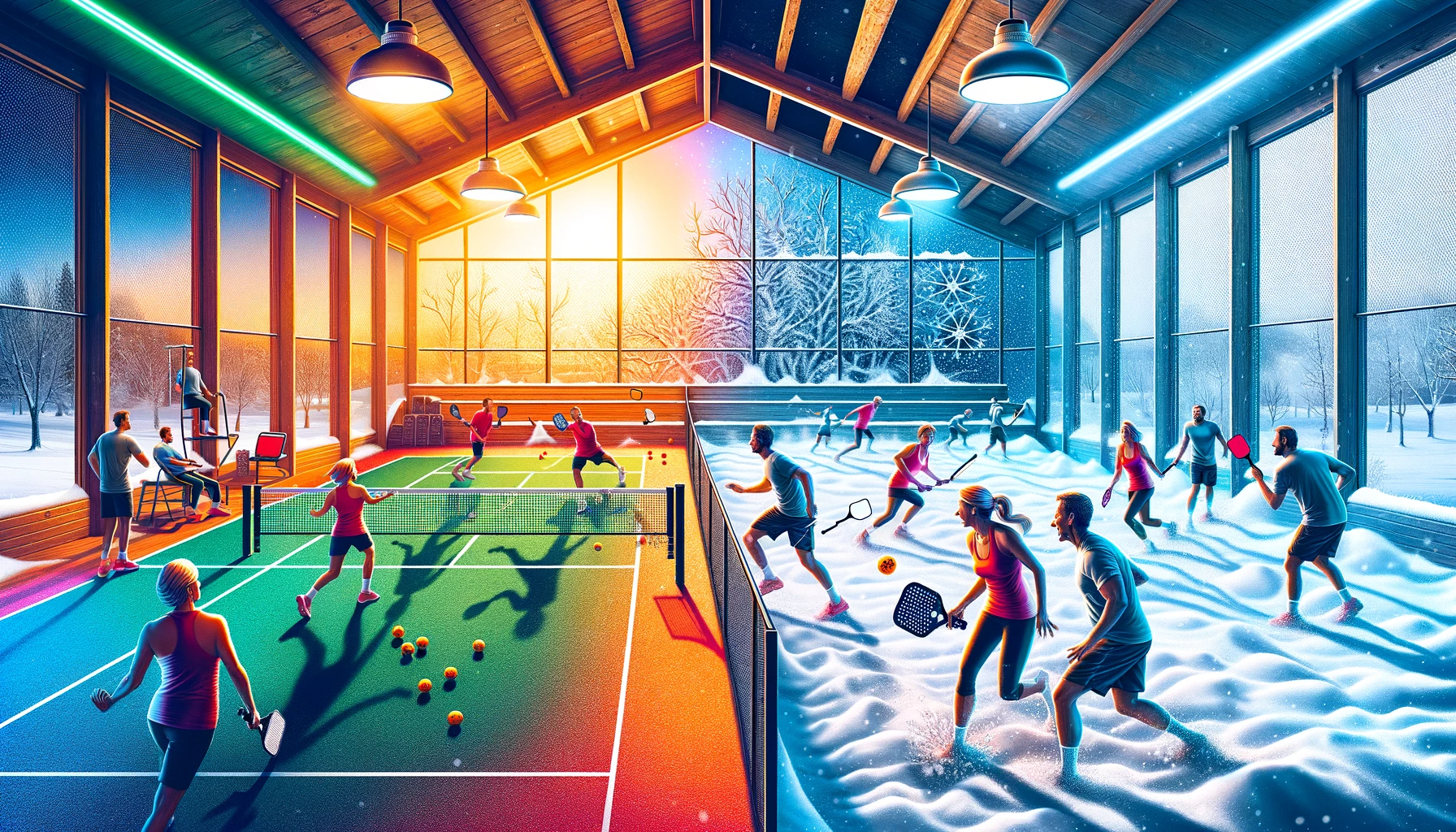

Home > Pickleball 101 > Pickleball Drills to Improve Your Skills
Pickleball Drills to Improve Your Skills
Whether you're a beginner or an experienced player, there are always ways to improve your skills and take your game to the next level. One of the best ways to do this is by incorporating drills into your practice routine. In this article, we will discuss several pickleball drills that can help you improve your skills and become a better player on the court. These drills will focus on different aspects of the game, such as footwork, hand-eye coordination, and strategy, and can be done individually or with a partner. So let's get started and take your pickleball game to new heights!
Warm-Up Drills
Whether you're a beginner or a seasoned player, incorporating warm-up drills into your routine can greatly improve your skills on the court. Not only do warm-up drills help prevent injuries, but they also prepare your body and mind for the intense game ahead. In this article, we'll discuss 5 essential warm-up drills for pickleball players that will help you elevate your game.
1. Jog and Stretch
Before you even step onto the court, it's important to get your blood flowing and your muscles warmed up. Start with a light jog around the court, gradually increasing your speed. This will help increase your heart rate and loosen up your muscles. Once you've completed a few laps, stop and stretch your arms, legs, and core. This will help prevent any strains or pulls during the game.
2. Shadow Swings
Next, it's time to focus on your pickleball swings. Stand in front of a wall or fence and mimic your forehand and backhand swings. This will help you get a feel for the motion and warm up your arm muscles. Make sure to use proper form and focus on your footwork as well. This drill will not only warm up your muscles but also improve your technique.
3. Mini Court Drills
Now it's time to get on the court and start moving. Set up a mini court using cones or markers and practice your shots from different positions. Start at the baseline and hit a forehand, then quickly move to the kitchen line and hit a backhand. This drill will help you get used to moving quickly and efficiently on the court, which is essential in pickleball.
4. Drop and Dink
The drop shot and dink are two essential shots in pickleball, and this drill will help you perfect them. Stand at the kitchen line and have a partner stand at the baseline. Your partner will hit a soft shot to you, and you must drop the ball back over the net. This drill will not only warm up your dinking skills but also improve your hand-eye coordination.
5. Serve and Return
Last but not least, it's time to focus on your serve and return. Have a partner stand at the baseline and practice serving to them. Make sure to use proper form and aim for different areas of the court. Once you've completed a few serves, switch roles and practice returning your partner's serves. This drill will help you get comfortable with your serve and improve your ability to return different types of serves.
Incorporating these 5 essential warm-up drills into your pickleball routine will not only improve your skills but also prevent injuries. Remember to always listen to your body and take breaks if needed. It's also important to stay hydrated and stretch after your game to prevent any soreness the next day.
In addition to these warm-up drills, it's also important to have a proper warm-up routine before each game. This can include light jogging, stretching, and practicing your shots. By incorporating these warm-up drills and routines into your pickleball game, you'll see a significant improvement in your skills and overall performance on the court.
Third Shot Drop Drills
One of the most important shots to master in pickleball is the third shot drop. This shot can make or break a game, and it's essential to have a strong and consistent technique. Let's discuss three drills that will help you perfect your third shot drop and take your pickleball skills to the next level.
1. Drop and Dink
The first drill is the "Drop and Dink" drill. This drill is perfect for beginners who are just learning the basics of the third shot drop. To start, stand at the baseline and have your partner stand at the kitchen line. Your partner will then hit a high lob to you, and your goal is to hit a soft and controlled drop shot back to them. The key here is to focus on your technique and make sure you're hitting the ball with a slight upward motion, causing it to drop just over the net. This drill will help you get a feel for the proper angle and touch needed for a successful third shot drop.
2. Target Practice
The next drill is the "Target Practice" drill. This drill is great for intermediate players who have a basic understanding of the third shot drop but want to improve their accuracy. For this drill, set up targets on the court, such as cones or water bottles, in the areas where you want your third shot drop to land. Then, have your partner hit a high lob to you, and your goal is to hit your third shot drop to one of the targets. This drill will not only improve your accuracy but also help you develop the ability to adjust your shot based on where your opponent is positioned on the court.
3. Third Shot Drop Rally
The final drill is the "Third Shot Drop Rally" drill. This drill is perfect for advanced players who want to take their third shot drop to the next level. To start, have your partner hit a high lob to you, and your goal is to hit a third shot drop back to them. However, instead of stopping there, continue to rally back and forth with your partner, hitting only third shot drops. This drill will not only improve your consistency but also help you develop the ability to hit a third shot drop from different positions on the court.
In addition to these drills, there are a few key tips to keep in mind when working on your third shot drop. First, make sure you're using a continental grip, which is the same grip used for a serve. This grip will give you more control and spin on the ball. Second, focus on your footwork. Your feet should be shoulder-width apart, and you should be in a semi-squat position when hitting the third shot drop. This will help you generate power and control on your shot. Lastly, always aim for the kitchen line. The closer your third shot drop lands to the kitchen line, the more difficult it will be for your opponent to return it.
Footwork Drills
One of the key components of being successful in pickleball is having good footwork. Below, we will discuss several pickleball drills that will help improve your footwork and take your game to the next level.
1. The Ladder Drill
The ladder drill is a classic footwork drill that is used in many sports, including pickleball. To do this drill, you will need a ladder or you can create one using chalk or tape on the ground. Start at one end of the ladder and step into each square with one foot, then step out with the same foot. Repeat this pattern until you reach the end of the ladder. Then, go back to the beginning and do the same thing with your other foot. This drill will help improve your agility and quickness on the court.
2. The Side Shuffle Drill
The side shuffle drill is another great way to improve your footwork in pickleball. Start by standing at one end of the court, facing the net. Shuffle sideways to the other end of the court, making sure to keep your feet shoulder-width apart and your knees bent. Once you reach the other end, shuffle back to the starting point. This drill will help you develop the lateral movement needed to cover the court effectively.
3. The Split Step Drill
The split step is a crucial movement in pickleball that allows you to quickly change direction and react to your opponent's shots. To practice this drill, stand in the ready position at the baseline. As your partner hits the ball, take a small hop and land with your feet shoulder-width apart. This will help you stay balanced and ready to move in any direction. Repeat this drill with different shots and from different positions on the court.
4. The Shadow Drill
The shadow drill is a great way to improve your footwork and mimic the movements you would make during a game. Find a partner and stand on opposite sides of the court. As your partner moves around the court, you should mirror their movements, staying a few steps behind. This drill will help you develop your footwork and reaction time, as well as your ability to anticipate your opponent's shots.
5. The Cone Drill
The cone drill is a fun and challenging way to improve your footwork in pickleball. Set up a series of cones in a zigzag pattern on one side of the court. Start at one end and weave in and out of the cones, making sure to stay low and keep your feet moving quickly. Once you reach the end, turn around and go back through the cones in the opposite direction. This drill will help you develop your footwork and agility, as well as your ability to change direction quickly.
6. The Drop Step Drill
The drop step is a crucial movement in pickleball that allows you to quickly move back and cover shots hit behind you. To practice this drill, stand at the baseline facing the net. As your partner hits a shot behind you, take a small step back with your outside foot and pivot to face the ball. This will help you quickly get into position to hit the ball back. Repeat this drill with shots hit to different areas of the court.
7. The Jump Rope Drill
Jumping rope is a great way to improve your footwork and coordination in pickleball. Start by jumping rope for 30 seconds, then take a 10-second break. Repeat this for a total of 5 minutes. This drill will help you develop your footwork, balance, and endurance on the court.
8. The Wall Drill
The wall drill is a simple yet effective way to improve your footwork in pickleball. Stand facing a wall and hit the ball against it, making sure to move your feet quickly to get into position for each shot. This drill will help you develop your footwork and hand-eye coordination.
9. The Partner Drill
Practicing with a partner is a great way to improve your footwork in pickleball. Have your partner hit shots to different areas of the court, and you should focus on moving your feet quickly and efficiently to get into position for each shot. This drill will help you develop your footwork and your ability to anticipate your opponent's shots.
10. The Speed Ladder Drill
The speed ladder drill is a challenging way to improve your footwork and speed on the court. Set up a speed ladder on the ground and perform different footwork patterns, such as high knees, lateral shuffles, and quick feet. This drill will help you develop your footwork, agility, and speed, which are all essential in pickleball.
These10 pickleball drills will help improve your footwork and take your game to the next level. Remember to practice these drills regularly and focus on moving your feet quickly and efficiently on the court. With dedication and hard work, you will see a significant improvement in your footwork and overall performance in pickleball. So grab your paddle and get ready to dominate the court with your improved footwork!
Soft Game Drills
The dink is a shot that is often underestimated by beginners, but it is a shot that can be a game-changer. It requires precision and control, rather than brute force. The dink is a great way to throw off your opponent's rhythm and force them to make a mistake. It can also be used to set up a more powerful shot, making it a versatile weapon in your pickleball arsenal.
1. Dink and Drop
The first drill to enhance your soft game is the "dink and drop" drill. This drill focuses on improving your accuracy and control when executing a dink. To start, stand at the kitchen line and have your partner stand on the other side of the net. Begin by dinking the ball back and forth, aiming for the kitchen line. As you become more comfortable with the shot, start aiming for specific spots on the kitchen line, such as the corners or the center. This will help you develop the ability to place your dinks exactly where you want them, making it harder for your opponent to return them.
The key to this drill is to keep the ball low and close to the net. This will make it harder for your opponent to reach and return the ball. As you become more proficient, you can also add in a drop shot after a few dinks. This will keep your opponent on their toes and make it even more challenging for them to return your shots.
2. Dink and Lob
The second drill to enhance your soft game is the "dink and lob" drill. This drill focuses on improving your ability to mix up your shots and keep your opponent guessing. Start by standing at the kitchen line and have your partner stand on the other side of the net. Begin by dinking the ball back and forth, but this time, mix in a lob shot every few dinks. The lob shot should be hit with a higher trajectory, aiming to land in the back of your opponent's court.
The key to this drill is to keep your opponent off balance. By mixing in a lob shot, you are forcing them to move back and forth between the kitchen line and the back of the court. This will make it harder for them to anticipate your shots and give you an advantage. As you become more comfortable with this drill, you can also add in a drop shot after a few dinks and lobs. This will make it even more challenging for your opponent to return your shots and give you more control over the game.
In addition to these two drills, there are a few tips that can help improve your soft game. First, make sure to keep your paddle face open when executing a dink. This will help keep the ball low and close to the net. Second, use your wrist to add spin to your dinks. This will make it harder for your opponent to read the direction of your shot. And finally, always be ready to adjust your shot based on your opponent's positioning. If they are standing closer to the net, a lob shot may be more effective, while a drop shot may be better if they are standing farther back.
Serving Drills
A strong and accurate serve can give you a competitive edge and set you up for success in each point. In this article, we will share 3 pickleball drills that will help you develop your serve and take your game to the next level.
1. Target Practice
The first drill we recommend is target practice. This drill will help you improve your accuracy and consistency when serving. To start, set up a target on the opposite side of the court, such as a cone or a towel. Then, stand at the baseline and serve towards the target. The goal is to hit the target with each serve. Start with a slow and controlled serve, and gradually increase the speed and power as you become more comfortable. This drill will not only improve your aim but also help you develop muscle memory for a consistent serve.
2. Serve and Volley
The next drill is called serve and volley. This drill will not only improve your serve but also your ability to quickly transition to the net. To begin, stand at the baseline and serve to your opponent. As soon as you serve, quickly move towards the net and be ready to volley the return. This drill will help you develop a more aggressive serve and improve your reaction time at the net. It is also a great way to practice your footwork and positioning on the court.
3. One-Handed Serve
The final drill we recommend is the one-handed serve. This drill will help you develop a more powerful and efficient serve. To start, hold the paddle with one hand and stand at the baseline. As you serve, focus on using your entire body to generate power, rather than just your arm. This drill will also help you improve your balance and coordination. Once you feel comfortable with the one-handed serve, switch back to your regular grip and notice the difference in your serve.
Bonus Tip: Practice with a Partner
While these drills can be done alone, practicing with a partner can make them even more effective. Not only will you have someone to give you feedback and help you improve, but you will also be able to simulate real game situations. Have your partner return your serves and practice different shots and strategies. This will not only improve your serve but also your overall game.
In addition to these drills, there are a few key tips to keep in mind when working on your serve. First, make sure to use a consistent toss. This will help you develop a consistent serve and avoid double faults. Also, focus on your grip and make sure it is comfortable and secure. A loose grip can result in a weak and inaccurate serve. Lastly, don't forget to follow through with your swing. This will help generate power and accuracy in your serve.
Defensive Drills
Pickleball is a fast-paced and exciting sport that requires quick reflexes and excellent court coverage. As a player, it's important to constantly work on your defensive skills to be able to react to your opponent's shots and cover the court effectively. In this article, we'll be sharing 10 pickleball drills that will help improve your reaction time and court coverage.
1. The "Around the Post" Drill
This drill is great for improving your reaction time and agility. Start by standing at the baseline on one side of the court. Have a partner stand at the net on the opposite side. Your partner will then hit a shot towards the sideline, and you must quickly move to the other side of the court and hit the ball back. This drill will help you get used to moving quickly and efficiently to cover the court.
2. The "Split Step" Drill
The split step is a crucial movement in pickleball that helps you react quickly to your opponent's shots. To practice this, stand at the baseline and have your partner hit balls to different areas of the court. As they hit the ball, perform a split step by jumping slightly and landing with your feet shoulder-width apart. This will help you be ready to move in any direction and react to the shot.
3. The "Lob and Smash" Drill
This drill is perfect for improving your reaction time to lobs. Have your partner stand at the net and hit lobs to different areas of the court. Your goal is to quickly move back and hit a smash shot. This drill will help you get used to reacting to lobs and moving back to hit an aggressive shot.
4. The "Drop Shot" Drill
Drop shots are a common tactic used in pickleball, and it's important to be able to react to them quickly. For this drill, have your partner stand at the net and hit drop shots to different areas of the court. Your goal is to quickly move forward and hit a drop shot back. This drill will help you improve your reaction time and control when hitting drop shots.
5. The "Cross-Court Dinks" Drill
Dinking is a crucial skill in pickleball, and this drill will help you improve your reaction time and court coverage when dinking. Stand at the baseline on one side of the court, and have your partner stand at the net on the opposite side. Your partner will hit cross-court dinks, and your goal is to quickly move side to side and hit the ball back. This drill will help you get used to covering the court and reacting to different dink shots.
6. The "3 Ball Drill"
This drill is great for improving your reaction time and footwork. Have your partner stand at the net and hit three balls to different areas of the court. Your goal is to quickly move and hit all three balls back. This drill will help you get used to reacting to multiple shots and moving efficiently to cover the court.
7. The "Shadow Drill"
The shadow drill is a great way to improve your reaction time and court coverage without a partner. Stand at the baseline and imagine a partner hitting shots to different areas of the court. Your goal is to quickly move and hit the imaginary shots back. This drill will help you improve your footwork and reaction time.
8. The "Backhand Drill"
Backhand shots can be challenging to react to, but this drill will help you improve your reaction time and control when hitting backhands. Have your partner stand at the net and hit backhand shots to different areas of the court. Your goal is to quickly move and hit the ball back with your backhand. This drill will help you get used to reacting to backhand shots and hitting them with control.
9. The "Forehand Volley Drill"
Volley shots are a crucial part of pickleball, and this drill will help you improve your reaction time and control when hitting forehand volleys. Stand at the net and have your partner hit volleys to different areas of the court. Your goal is to quickly move and hit the ball back with your forehand. This drill will help you get used to reacting to volleys and hitting them with precision.
10. The "Footwork Ladder" Drill
This drill is great for improving your footwork and reaction time. Set up a ladder on the court and perform different footwork drills, such as side shuffles, high knees, and quick feet. This will help you improve your agility and reaction time, making it easier to cover the court during a game.
Remember to practice these drills regularly to see improvement in your defensive skills. With dedication and hard work, you'll be able to react quickly to your opponent's shots and cover the court effectively. So grab your paddle and start practicing these drills to take your pickleball game to the next level!
Advanced Drills
Are you an experienced pickleball player looking to take your skills to the next level? Look no further! In this article, we will be sharing 10 advanced pickleball drills that will help you improve your game and dominate on the court.
1. The Crosscourt Dink Drill
This drill is great for improving your crosscourt dinks and footwork. Stand at the kitchen line and have your partner stand at the opposite kitchen line. Start by dinking crosscourt to each other, gradually increasing the speed and intensity. This drill will help you develop control and consistency in your crosscourt shots.
2. The Two-Bounce Drill
This drill is perfect for improving your reaction time and quickness. Stand at the baseline, and your partner stands at the kitchen line. Hit a shot to your partner, and they must let the ball bounce twice before hitting it back to you. Alternate roles after each shot and focus on quick reflexes.
3. The No-Volley Zone Drill
This drill is all about mastering the no-volley zone, also known as the kitchen. Stand at the kitchen line, and your partner stands at the baseline. Hit a shot to your partner, and they must respond with a shot that lands in the kitchen. This drill will help you develop control and placement in the no-volley zone.
4. The One-Handed Backhand Drill
The one-handed backhand is a challenging shot in pickleball, but this drill will help you master it. Stand at the baseline, and your partner stands at the opposite baseline. Hit a shot to your partner's backhand side, and they must respond with a one-handed backhand. Alternate roles after each shot and focus on technique and control.
Incorporate these four advanced pickleball drills into your practice routine, and you will see a significant improvement in your skills on the court. Remember to focus on technique, consistency, and accuracy, and most importantly, have fun!
Conclusion
In conclusion, incorporating pickleball drills into your training routine is an effective way to improve your skills and become a better player. These drills can help you develop your hand-eye coordination, footwork, and overall technique, leading to better performance on the court. By regularly practicing these drills, you can also increase your speed, agility, and reaction time, making you a more well-rounded and competitive player. So whether you're a beginner or an experienced player, incorporating these 10 pickleball drills into your training can greatly enhance your skills and take your game to the next level.
